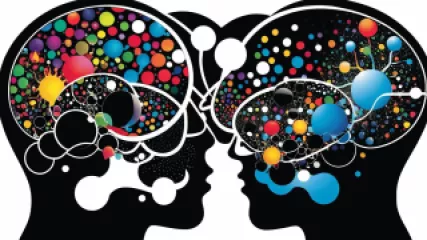Exploring Common Cognitive Distortions: An Ultimate Guide
Introduction
Welcome to the ultimate guide on exploring common cognitive distortions. In this comprehensive article, we will dive deep into the world of cognitive distortion types, their impact on our thoughts and emotions, and practical techniques to overcome them. Whether you are a coach, therapist, or someone interested in understanding cognitive distortions, this guide will provide you with valuable insights and strategies to navigate through these common thinking patterns.
Section 1: Understanding Cognitive Distortions
Cognitive distortions, also known as thinking traps or irrational beliefs, are exaggerated or irrational thought patterns that can negatively impact our mental health and well-being. These distortions often arise from biased thinking and can lead to feelings of anxiety, depression, and low self-esteem.
While everyone experiences cognitive distortions to some degree, it is essential to recognize and address them to maintain a healthy mindset. By understanding the different types of cognitive distortions and how they manifest in our thoughts, we can develop effective strategies to challenge and reframe these distorted patterns.
1.1 The Role of Cognitive Distortions
Cognitive distortions are not inherently negative; they are a natural part of human thinking. They often serve as mental shortcuts or coping mechanisms that help us make sense of the world and protect us from potential threats. However, when these distortions become pervasive and automatic, they can hinder our ability to think rationally and lead to emotional distress.
It is crucial to note that cognitive distortions are not based on objective reality but rather on our subjective interpretations of events. By learning to identify and challenge these distortions, we can gain a more balanced perspective and improve our overall well-being.
1.2 Common Cognitive Distortion Types
There are several common cognitive distortion types that people frequently experience. Understanding these patterns can help us become more aware of our own thinking and develop the skills to challenge and replace them with more accurate and balanced thoughts. Let's explore some of the most prevalent cognitive distortion types:
- All-or-Nothing Thinking: This distortion involves viewing situations in extreme black-and-white terms, without considering the shades of gray or the complexity of reality.
- Overgeneralization: Overgeneralization occurs when we draw broad conclusions based on limited evidence or a single negative experience.
- Mental Filtering: Mental filtering refers to selectively focusing on negative aspects of a situation while ignoring positive or neutral elements.
- Jumping to Conclusions: This distortion involves making assumptions or interpretations about a situation without sufficient evidence, often leading to negative outcomes.
- Emotional Reasoning: Emotional reasoning occurs when we believe our emotions reflect objective reality, assuming that if we feel a certain way, it must be true.
- Labeling: Labeling involves assigning global, negative labels to ourselves or others based on specific behaviors or characteristics.
- Personalization: Personalization occurs when we take responsibility for events or situations that are beyond our control, blaming ourselves for things that are not our fault.
Section 2: Techniques for Overcoming Cognitive Distortions
Now that we have a solid understanding of cognitive distortions and their impact, let's explore some practical techniques to overcome these distorted thinking patterns. By implementing these strategies, we can challenge our automatic thoughts and develop healthier ways of interpreting the world around us.
2.1 Cognitive Distortion Coaching
Cognitive distortion coaching is a valuable tool for therapists, coaches, and individuals seeking to overcome cognitive distortions. This approach involves guiding clients through a process of identifying, challenging, and reframing their distorted thoughts.
Coaches and therapists can use various techniques to facilitate cognitive distortion coaching, such as:
- Thought Records: Keeping a record of automatic thoughts and examining evidence for and against them.
- Socratic Questioning: Asking probing questions to challenge the validity of distorted thoughts and encourage critical thinking.
- Reframing Exercises: Helping clients reframe their thoughts by looking for alternative explanations or perspectives.
- Behavioral Experiments: Encouraging clients to test the accuracy of their beliefs through real-life experiences.
2.2 Cognitive Restructuring
Cognitive restructuring is a therapeutic technique commonly used to address cognitive distortions. This technique involves identifying and replacing negative or irrational thoughts with more accurate and balanced ones.
Here are the key steps involved in cognitive restructuring:
- Identify Distorted Thoughts: Recognize when you are experiencing cognitive distortions by paying attention to your thoughts and emotions.
- Evaluate Evidence: Examine the evidence supporting and contradicting your distorted thoughts. Look for objective facts and consider alternative explanations.
- Challenge and Reframe: Challenge the distorted thoughts by asking yourself questions like "Is this thought helping me?" or "What's a more realistic interpretation of this situation?" Reframe the thought into a more balanced and rational perspective.
- Practice: Regularly practice cognitive restructuring techniques to reinforce new thinking patterns and make them automatic.
2.3 Mindfulness and Cognitive Distortions
Mindfulness practices can also be beneficial in overcoming cognitive distortions. By cultivating present-moment awareness and non-judgmental acceptance, mindfulness helps us observe our thoughts without getting caught up in them.
When it comes to cognitive distortions, mindfulness can:
- Enhance self-awareness, allowing us to recognize when we are engaging in distorted thinking patterns.
- Promote acceptance of our thoughts and emotions, reducing the tendency to judge ourselves harshly for having distorted thoughts.
- Develop the ability to let go of unhelpful thoughts and redirect our attention to the present moment.
Section 3: Applying Cognitive Distortion Techniques in Daily Life
Understanding cognitive distortions and practicing techniques to overcome them is only the first step. To truly benefit from these strategies, it is essential to apply them in our daily lives. Here are some practical tips for incorporating cognitive distortion techniques into your routine:
3.1 Journaling
Journaling is a powerful tool for increasing self-awareness and challenging cognitive distortions. Set aside time each day to write down your thoughts and emotions, paying attention to any distorted patterns that emerge. Use the techniques mentioned earlier to reframe those thoughts and develop a more balanced perspective.
3.2 Seeking Support
Don't hesitate to seek support from a therapist, coach, or trusted friend when working on overcoming cognitive distortions. They can provide guidance, hold you accountable, and offer an outside perspective to help challenge and reframe your thinking.
3.3 Practicing Self-Compassion
Remember to be kind and compassionate towards yourself as you navigate the process of overcoming cognitive distortions. It takes time and effort to change ingrained thinking patterns, so be patient with yourself and celebrate small victories along the way.
3.4 Consistency and Persistence
Overcoming cognitive distortions requires consistent practice and persistence. Make a commitment to work on challenging your distorted thoughts regularly, even when it feels challenging or uncomfortable. With time and dedication, you will begin to notice positive changes in your thinking patterns and overall well-being.
In conclusion, understanding and addressing cognitive distortions is an essential step towards improving our mental well-being. By recognizing common cognitive distortion types, implementing effective techniques like cognitive distortion coaching and cognitive restructuring, and applying these strategies in our daily lives, we can break free from the grip of distorted thinking and cultivate a more balanced and rational mindset.
Remember, challenging cognitive distortions is an ongoing process that requires patience and self-compassion. With time and practice, you can develop the skills to overcome these thinking traps and experience greater clarity, resilience, and emotional well-being.






